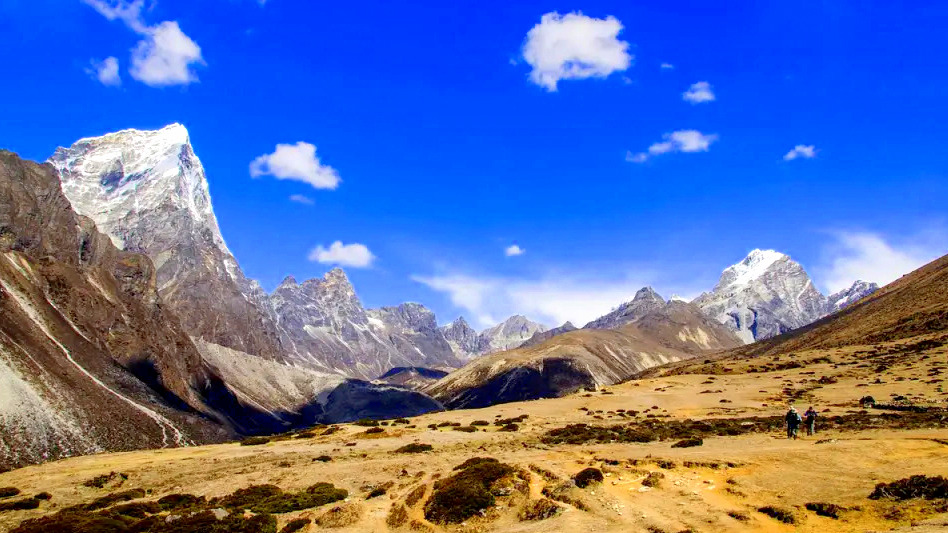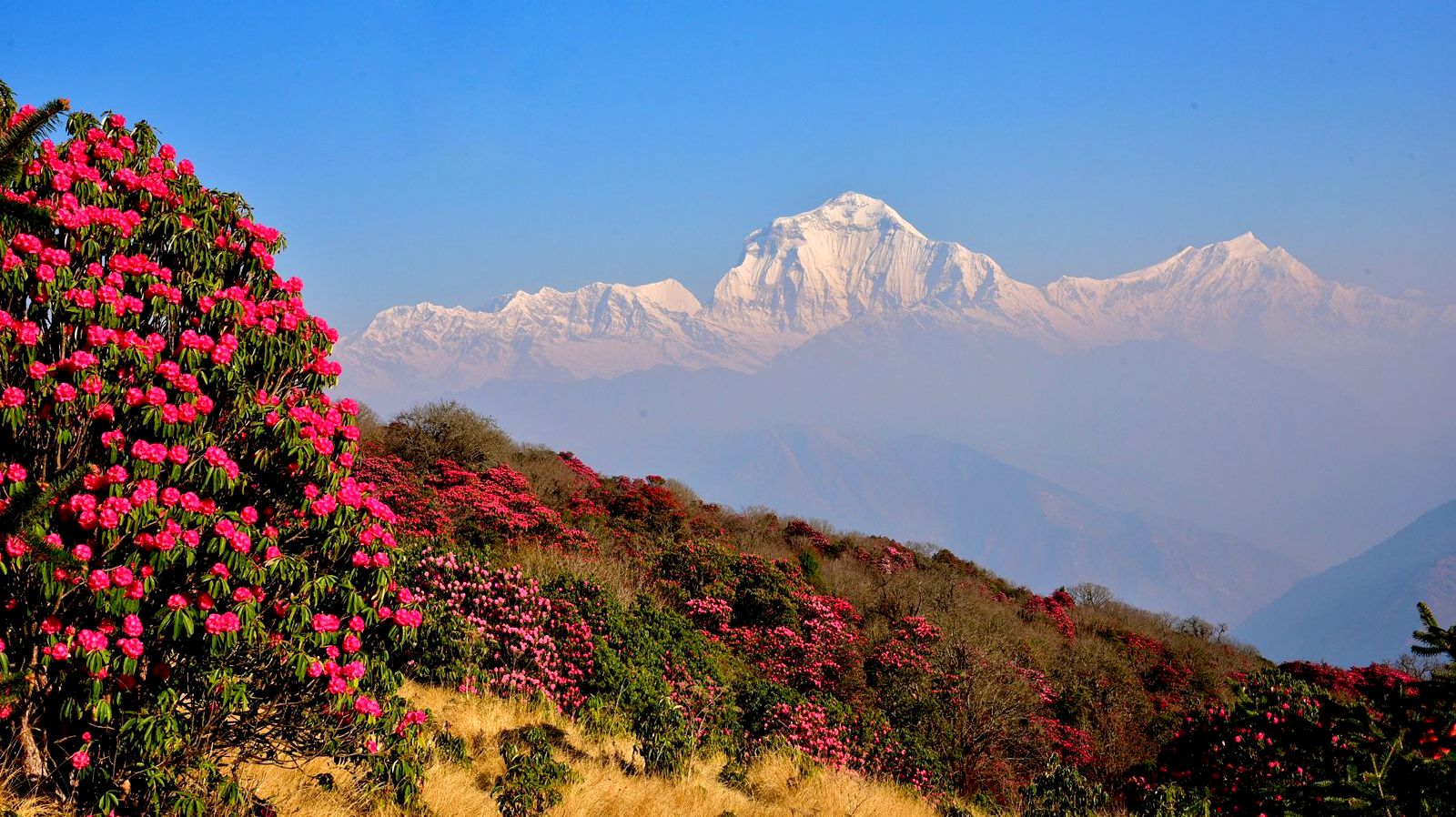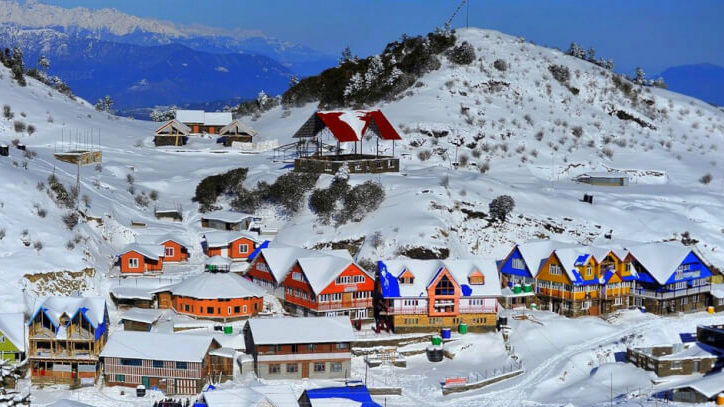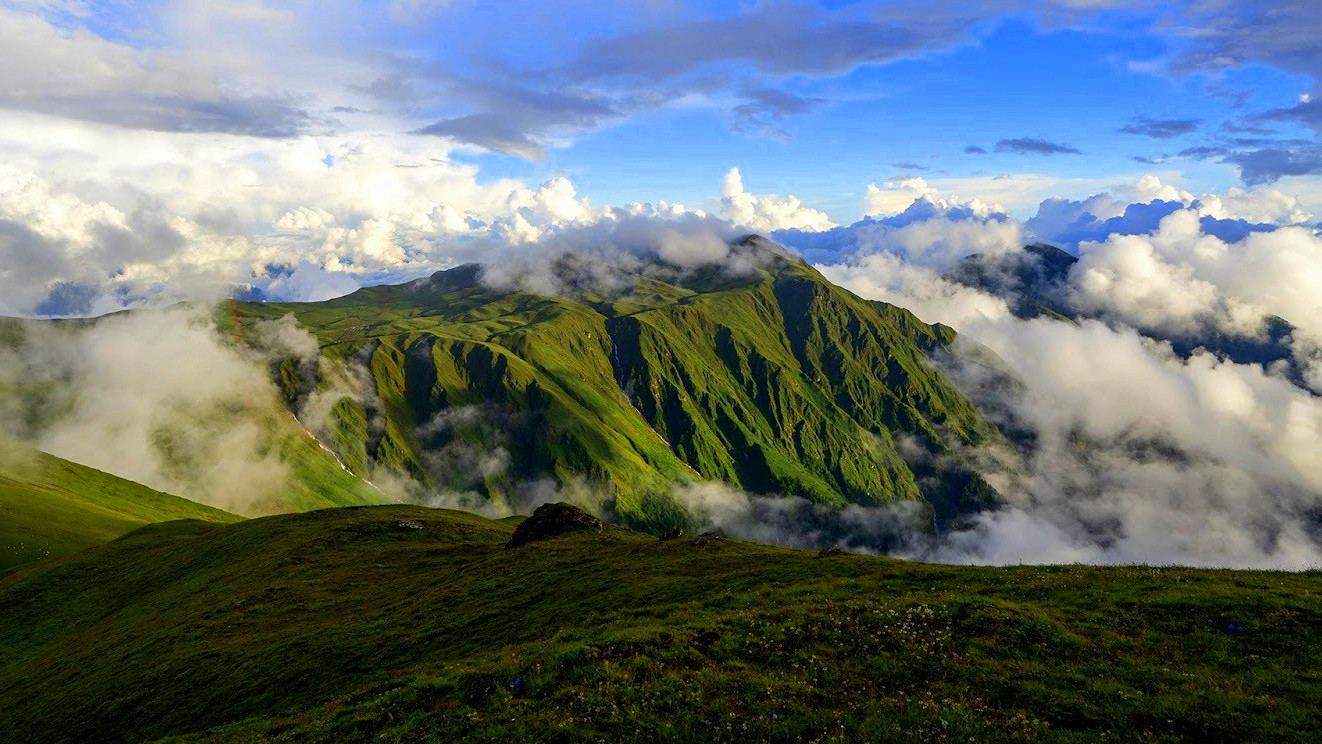Nepal, a jewel nestled in the heart of the Himalayas, has long been a beacon for travelers seeking unparalleled adventure and cultural immersion. For those who heed the call of the mountains, trekking in this mesmerizing country is an experience like no other. Luxury Holidays Nepal takes immense pride in guiding wanderers through this mystical terrain, offering insights, not only on the trails but also on the optimal seasons to embark on these treks. With varying altitudes and landscapes, the best time for trekking can differ. Understanding Nepal's climate and seasons can help trekkers choose the perfect window for their journey.
The country's diverse climatic conditions, a result of its unique topographical variations, give rise to multiple trekking seasons. Each season has its charm, with distinct vistas and challenges. While the best time for trekking in Nepal predominantly revolves around the pleasant months of Autumn and the vibrant Spring, one should not dismiss the serene beauty of Winter or the secluded allure of the Summer/Monsoon months, especially in rain-shadow regions.

Autumn, spanning from September to November, is often lauded as the prime trekking season. This period promises crystal-clear skies, granting uninterrupted views of the towering peaks. With moderate temperatures, especially in lower elevations, trekkers find the conditions ideal for long, scenic hikes. Moreover, the cultural vibrancy, with festivals like Dashain and Tihar, adds an extra layer of richness to the trekking experience during these months.
Spring, running from March to May, offers a slightly warmer alternative. The trails are painted with a riot of colors as rhododendrons and other alpine flora burst into full bloom. While the views are slightly hazier compared to Autumn, the verdant landscapes and blossoming trails present a different, equally captivating charm. As experts in curating exquisite trekking experiences, Luxury Holidays Nepal always emphasizes the importance of understanding these seasonal nuances to ensure trekkers have a fulfilling and memorable journey.
Autumn (September to November)
Autumn in Nepal, spanning from September to November, is often heralded as the optimal season for trekking. With its clear skies, moderate temperatures, and cultural festivities, it's easy to see why many prefer this window for their Himalayan journey. Yet, like all things, even this favored season has its challenges. Luxury Holidays Nepal provides a balanced perspective, delving into the pros and cons of trekking during this period.

Pros of Trekking During Autumn
-
Clear Skies and Spectacular Views: One of the significant advantages of trekking in Autumn is the post-monsoon clarity in the air. This ensures trekkers get unobstructed, breathtaking views of the Himalayas, be it from popular trails like the Annapurna Circuit or lesser-known paths.
-
Balmy Temperatures: The pleasant warmth during daytime treks combined with the cool evenings offers a comfortable trekking environment. The residual warmth from the summer months, especially in lower elevations, ensures that trekkers don’t face extreme colds.
-
Rich Cultural Experience: Autumn in Nepal is a cultural mosaic. Major festivals like Dashain and Tihar fall during these months, allowing trekkers to immerse in Nepali traditions, engage with locals, and witness the country in celebratory spirits.
-
Stable Weather Patterns: The chances of unforeseen weather disruptions, such as heavy rains or snowfall, are minimal during Autumn. This stability means trekkers can plan their expeditions with greater confidence.
Here are some of the most popular treks, which can be done in Autumn Season:
Cons of Trekking During Autumn
-
Crowded Trails: Given its popularity, major trekking routes can become crowded. This can sometimes lead to overbooked accommodations, especially in renowned places like the Everest Base Camp or Ghorepani Poon Hill.
-
Higher Costs: The influx of trekkers can lead to inflated prices in certain areas. Whether it’s accommodation, food, or even local goods, travelers might find themselves paying a premium during the peak season.
-
Environmental Impact: The increased footfall during these months puts added pressure on local ecosystems. Irresponsible tourism practices can lead to littering, waste mismanagement, and other environmental concerns.
-
Lesser Personal Connection: With trails buzzing with trekkers, those seeking a more personal, introspective, or intimate Himalayan experience might find Autumn a bit overwhelming.
While Autumn undeniably holds immense allure for trekking in Nepal, it’s essential to weigh its advantages against the challenges. As always, Luxury Holidays Nepal believes in informed choices, ensuring that trekkers have a memorable and impactful journey, no matter the season.
Spring (March to May)
Spring, with its vibrant landscapes and agreeable climate, beckons trekkers to Nepal from all over the world. As the winter snow recedes and nature awakens in full bloom, the months from March to May offer a distinct trekking experience. Yet, like every season, Spring comes with its set of advantages and challenges. Luxury Holidays Nepal is here to provide a comprehensive overview, highlighting the pros and cons of embarking on a trek during this rejuvenating period.

Pros of Trekking During Spring
-
Floral Extravaganza: Spring is affectionately termed the 'Rhododendron Season' in Nepal. Trekkers are treated to forests awash with red, pink, and white blooms. This riot of colors, especially in regions like the Annapurna Circuit or Ghorepani Poon Hill, offers a visual spectacle that's unique to this season.
-
Mild and Warm Temperatures: Spring brings in moderate temperatures that strike a balance between the cold of winter and the heat of summer. Days are pleasantly warm, ensuring comfort during treks, while nights, though cooler, are bearable with the right gear.
-
Diverse Wildlife: The blossoming flora attracts various bird species, making Spring a fantastic season for bird-watching enthusiasts. The overall rejuvenation of ecosystems ensures that trekkers get a wholesome nature experience.
-
Clear Skies with a Hint of Mystery: While Spring generally offers clear skies, the occasional misty mornings add a touch of mystique to the mountains, making sunrises and sunsets even more magical.
Cons of Trekking During Spring
-
Occasional Rainfalls: Spring, leading up to the monsoon, can experience unexpected short showers. These rains, though not as persistent as the monsoon, can render trails slippery and muddy.
-
Popular Trails Can Get Busy: Given the season's appeal, certain trekking routes can see a surge in footfall. This might detract from the solitude some trekkers seek during their Himalayan adventure.
-
Allergens in the Air: With everything in bloom, the pollen count is higher. This can be an issue for trekkers with allergies, making it essential for them to take precautions.
-
Variable Altitude Temperatures: While lower altitudes are comfortably warm, higher altitudes can still retain the winter chill. Trekkers need to be prepared with layered clothing to adjust to the varying conditions.
Spring in Nepal is undeniably a season of life and colors. However, a trek during this period requires an understanding of its nuances. Luxury Holidays Nepal recommends thorough preparation and flexibility in plans, ensuring that trekkers make the most of their Spring Himalayan expedition.
Here are some of the most popular treks, which can be done in Spring Season:
Winter (December to February)
Winter's embrace brings a transformative touch to Nepal's vast landscapes. Spanning from December to February, the Himalayas draped in snow offer a serene and distinctive charm, contrasting the busy vibrancy of peak trekking seasons. As the trekkers' dedicated guide and companion, Luxury Holidays Nepal wishes to provide a balanced view, elucidating both the allure and challenges of winter treks in this Himalayan nation.

Pros of Trekking During Winter
-
Pristine Snowscapes: Higher elevations are blanketed in a shimmering layer of snow, turning treks into winter wonderlands. Places like the Everest Base Camp, Annapurna Base Camp, and various high-altitude passes offer a different, enchanting vista in their winter attire.
-
Seclusion and Serenity: Winter treks promise quieter trails. For those yearning for solitude and a deep connection with nature, this season offers an opportunity to explore the Himalayas in relative peace, away from the tourist throngs.
-
Cultural Immersion: Winter hosts several cultural festivities in Nepal. Celebrations such as Maghe Sankranti and Sonam Lhosar present trekkers with an intimate insight into the rich tapestry of Nepali traditions, adding depth to the trekking experience.
-
Clear and Crisp Days: Winter days, especially in lower altitudes, can be beautifully clear. The air's crispness, accentuated by brilliant sunlight, offers some of the most lucid mountain views.
Cons of Trekking During Winter
-
Biting Cold and Unpredictable Weather: Temperatures, especially during nighttime and at higher altitudes, can be brutally cold. There's also the unpredictability of snowstorms and severe weather, which can pose risks and hinder travel plans.
-
Limited Accessibility: Some trails, particularly high-altitude passes, might be rendered inaccessible due to heavy snowfall, restricting the trekking options available during winter.
-
Shorter Daylight Hours: With the sun setting earlier, trekkers have fewer daylight hours for trekking, making it imperative to plan stages of the trek meticulously to avoid trekking in the dark.
-
Required Gear: Winter trekking demands specific gear to handle the cold, like four-season sleeping bags, insulated clothing, and maybe even crampons or microspikes for certain icy stretches. This means added weight and possibly increased costs for trekkers.
Winter trekking in Nepal is a mesmerizing, albeit challenging, experience. It offers an intimate, serene, and different perspective of the Himalayas. Luxury Holidays Nepal stresses the importance of preparation, flexibility, and guided expertise for those who wish to embark on a winter journey, ensuring safety and maximizing enjoyment.
Here are some of the most popular treks, which can be done in Winter Season:
Summer/Monsoon (June to August)
When summer merges with the monsoon season, Nepal's landscapes transform, unveiling an altogether different shade of its beauty. The period from June to August might be marked by frequent rains, but this does not entirely dampen the spirit of intrepid trekkers. With Luxury Holidays Nepal as your guiding partner, here's a comprehensive exploration of both the advantages and challenges of trekking during these wet months.

Pros of Trekking During Summer/Monsoon
-
Vibrant Greenery: The relentless rains reinvigorate Nepal's terrains. Vast expanses turn lush green, and trekking amidst such verdant settings offers a refreshing experience. Be it the terraced fields or dense forests; everything seems to come alive.
-
Mystical Atmosphere: The misty aura of the mountains, with clouds rolling over peaks and valleys, provides a dreamy and mysterious backdrop for treks. It's a unique spectacle, setting summer treks apart.
-
Rain-Shadow Treks: Areas like Upper Mustang and Dolpo fall under the rain-shadow regions of the Himalayas. Thus, they remain relatively dry even during the monsoon, making them prime trekking destinations in these months.
-
Fewer Crowds: With fewer trekkers venturing out this season, popular trails are less crowded, accommodations are easier to find, and there's a stronger sense of solitude and connection with nature.
Cons of Trekking During Summer/Monsoon
-
Heavy Rains & Trail Conditions: Intermittent downpours can make trails slippery, muddy, and challenging to traverse. There's also the added risk of flash floods in certain areas and landslides, making some routes potentially dangerous.
-
Leeches and Bugs: The damp conditions are perfect for leeches, especially in the lower altitudes. Trekkers need to be prepared with leech socks, repellents, and perhaps even salt to deter these persistent critters.
-
Visibility Issues: The cloud cover and persistent rains can obscure the majestic views of the Himalayas, which might be a disappointment for those trekking primarily for the mountain vistas.
-
Travel Disruptions: The monsoon season can lead to frequent flight delays, cancellations, and road blockages, making travel to and from trekking starting points a bit unpredictable.
While the summer/monsoon season presents challenges, it's not devoid of its unique attractions. Trekking during this time requires a different mindset, coupled with adequate preparation and adaptability. Luxury Holidays Nepal encourages trekkers to embrace the season's unpredictability, ensuring they experience the Himalayas in their raw, untamed monsoonal glory.
Here are some of the most popular treks, which can be done in Summer/Monsoon Season:
Nepal, with its unparalleled topographical diversity and cultural richness, ensures that every season offers a unique trekking experience. While the clear skies and temperate climates of Autumn (September to November) and Spring (March to May) draw the majority of trekkers, delivering spectacular vistas and blooming landscapes respectively, they also come with the challenges of crowded trails and peak-season pricing. On the other hand, the tranquility of Winter (December to February) offers serene snowscapes and a deeper connection with nature, albeit with the caveat of freezing temperatures and limited accessibility. Meanwhile, the Summer/Monsoon (June to August) season, often overshadowed by its rain-soaked trails, reveals an underrated beauty with lush greenery and fewer trekkers, suited for those who don't mind trading mountain views for mystic landscapes.
Determining the 'best' time for trekking in Nepal hinges on individual preferences, be it for clear mountain views, cultural festivities, solitude, or unique landscapes. What remains constant, regardless of the season, is the Himalayan charm and the warm hospitality of its people. With the right preparation and guidance, such as that offered by Luxury Holidays Nepal, every trekking journey in Nepal can be tailored to become an unforgettable adventure.
If you need any further information, please contact us by email: [email protected], Phone: +977- 985 100 5129 (WhatsApp)




